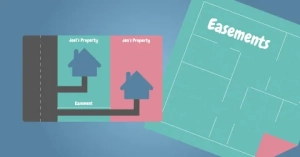
Embarking on the journey of purchasing a new home is an exciting venture, but discovering that the property comes with an easement can add a layer of complexity. Understanding easements and their implications is crucial for homebuyers and investors in the Tampa real estate market. This guide sheds light on property easements, their types, and how to navigate them effectively.
What Is an Easement in Real Estate?
In real estate, an easement is a non-possessory property interest that grants another party the right to access your land for a specific purpose. Whether students cross your yard to reach a nearby school or utility companies accessing power lines, easements can significantly impact property rights. They can be affirmative, allowing specific access, or negative, restricting particular property development.
How Do Easements Work?
If your property has an easement, the holder has the legal right to access it based on agreed-upon guidelines. Utility easements, for example, grant access to essential services but may impose limitations on property use. Conversely, if you hold an easement, you can legally access the property you don’t own, such as crossing someone else’s land to reach your home.
Types of Easements:
- Utility Easements: Created by law, these allow utility companies access for infrastructure maintenance, potentially impacting property use.
- Private Easements: Granted by property owners to others, these can affect future homeowners, making due diligence essential before buying.
- Easements by Necessity: Created when someone must access your property, such as a landlocked neighbor needing a right of way.
- Prescriptive Easements: Granted through repeated use of property without the owner’s objection, necessitating prompt action to prevent such easements.
FAQs About Property Easements:
- How Will An Easement Affect My Ownership? Easements can limit property use but may also provide benefits, impacting aesthetics in the case of utility easements.
- How Do I Know If A Property Has An Easement? Conduct a title search during home-buying to identify recorded easements; it may not be registered, so diligence is necessary
Understanding Easement Appurtenant:
An easement appurtenant benefits one property while burdening another. For example, granting access to a beach through your property can be an easement appurtenant.
Distinguishing Prescriptive Easements and Adverse Possession:
Prescriptive easements grant limited rights, while adverse possession aims for full ownership. Intent and actions differentiate the two.
Preventing Prescriptive Easements:
Act promptly to assert property rights by giving permission or preventing trespassers. Permission can safeguard against future claims.
The Bottom Line:
While easements are routine in real estate, they can be beneficial and restrictive. Thorough research, including a property title search, is essential before purchasing a property with easements. Being well-informed protects your investment and ensures a smooth home-buying experience in the vibrant Tampa real estate market.
– Article by: Michael Kernodle
